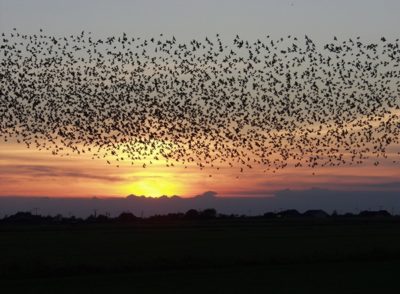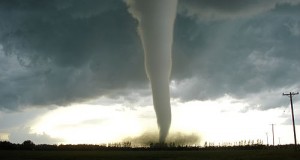 Animal behavior can give you some serious clues about changes in the weather – and even about danger.
Animal behavior can give you some serious clues about changes in the weather – and even about danger.
Activity patterns shift in anticipation of coming storms, and the magnitude of the shifts can tell you something about what the animals are thinking about the length and severity of the weather. We all know that animal behavior changes with the seasons. Certain creatures hibernate and are absent through the winter, some creatures migrate, and these patterns can tell us a lot about the timing of seasonal changes. If the winter or spring is coming early, animals know it before meteorologists do, and they time their activities accordingly.
But they also know about the smaller changes within the seasons, such as coming storms and unseasonal warm-ups. The key to recognizing changes in behavior, however, is to recognize the normal patterns, so you are going to have to get yourself out in the woods in order to learn the norms and note the changes. These things are hard to teach, and are best suited to experiential learning. You might have to force yourself to pick up a squirrel rifle from time to time and get out in the woods to hear what the wildlife wants to tell you.
In general, watch migratory birds for clues to the timing of the seasons. If birds show up or leave early for the winter, hold on! If birds return early for spring, spring is coming early. Keeping a few bird feeders will allow you to more easily monitor this, and to track daily activity patterns for clues to more short-term weather trends. Watch the foraging patterns of squirrels and chipmunks for clues to both long- and short-term weather trends.
Animals are also great indicators of approaching danger. The big thing to remember here is that, as far as the critters are concerned, you are an approaching danger. Remember all those movies where the point man raises his hand and then clenches his fist to get everyone behind him to stop? Immediately, some forest or jungle creature does something to let him know that the bad guys are crouched behind THAT bush in ambush? It seldom works that way in the real woods. The trouble is, all the critters in your immediate area are on alert for you. To get a good read on the critters around you, you are going to have to stop, stand still, and blend in until they forget you are there. This can take 10 or 15 minutes, and you will know it is working when the small animals and birds start moving and calling near you. It is amazing what you will hear and see with a bit of stillness and patience, and this is what you can use as a baseline for the “no danger woods. What you see and hear when you are on the move is a cautious or even frightened woods.
Reading the woods is another skill that only comes through experience; better get that squirrel rifle out again. There are some rules of thumb however that can get you started:
1. Crows, ravens, and blue jays are trouble-makers. These noisy birds love nothing better than to announce the coming of any creature that is trying to be stealthy. They also enjoy perching above any critter that is trying to hide, squawking their brains out. Jays have elevated this to an art-form, and they have messed up more than one hunt for me, but they have also told me when something was coming.
2. Squirrels like to chatter and scold. Not all the time, but when they are feeling cocky. They can alert you to a hider, if you have been still long enough to know they aren’t scolding you.
3. Any birds breaking cover and taking flight suddenly have probably been startled by something. Small game taking off on the run has probably been scared as well. Again, if you have been still and watching for some minutes before noticing something like this there is probably something other than you bothering the wildlife.
4. Your domestic animals can give you clues to approaching dangers, as well. Dogs aren’t the only good watch dogs. My horses often let me know if something or someone is nearby, and they even let me know the direction of approach by squaring their whole body up to it and pointing their eyes directly at it. They aren’t noisy about it, but if you watch your horses they can tell you a lot. Turkeys and guineas are also great for alerting you to the presence of just about anything.
If you learn the rhythms of the wildlife around you, they can tell you a lot. From the weather to the approach of a hit squad, the critters can clue you in if you take the time to learn their “language.” Get some bird feeders and then get yourself out in the woods, take the time to just sit quietly and pay attention, because if you don’t recognize normal animal behavior you won’t be able to recognize and interpret the changes.
Sign up for Off The Grid News’ weekly email and stay informed about the issues important to you
 Off The Grid News Better Ideas For Off The Grid Living
Off The Grid News Better Ideas For Off The Grid Living




